The modern world faces an unprecedented sleep crisis, with millions of people struggling with sleep disorders and poor sleep quality every night. Recent studies reveal that over 70 million Americans suffer from chronic sleep problems, leading many to seek alternatives to traditional sleep medications. This growing interest in natural remedies reflects a desire for safer, sustainable solutions that work with the body’s natural processes rather than against them.
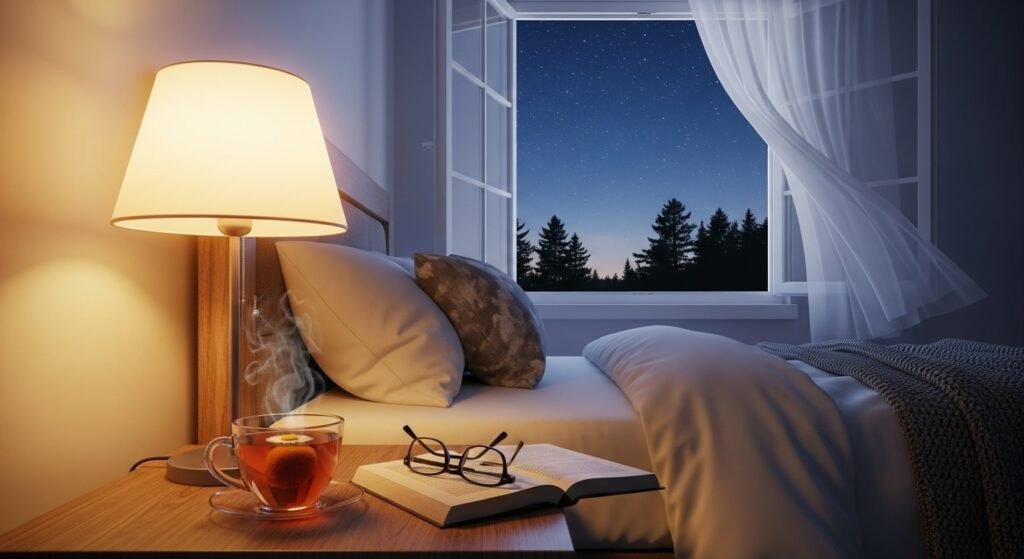
These evidence-based home remedies offer hope for those seeking better rest without relying on pharmaceutical interventions. While natural sleep aids may not provide instant results like prescription medications, they offer a gentler approach that supports long-term sleep health. Setting realistic expectations is crucial – most natural approaches require consistency and patience, with improvements typically noticed within 2-4 weeks of regular practice.
Understanding that sleep improvement is a journey rather than a quick fix helps individuals approach natural remedies with the right mindset for success.
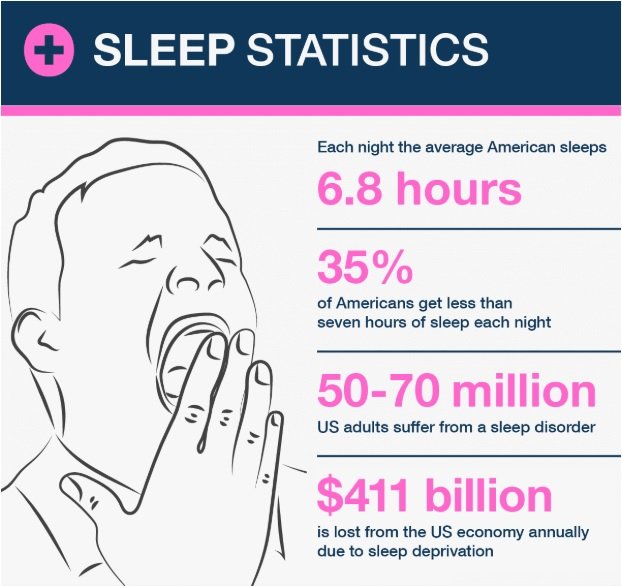
Understanding Sleep Science
The Basics of Sleep Cycles and Circadian Rhythms
Sleep occurs in predictable cycles, each lasting approximately 90 minutes and consisting of different stages including light sleep, deep sleep, and REM sleep. The body’s circadian rhythm, often called the internal clock, regulates these cycles based on environmental cues like light and darkness.
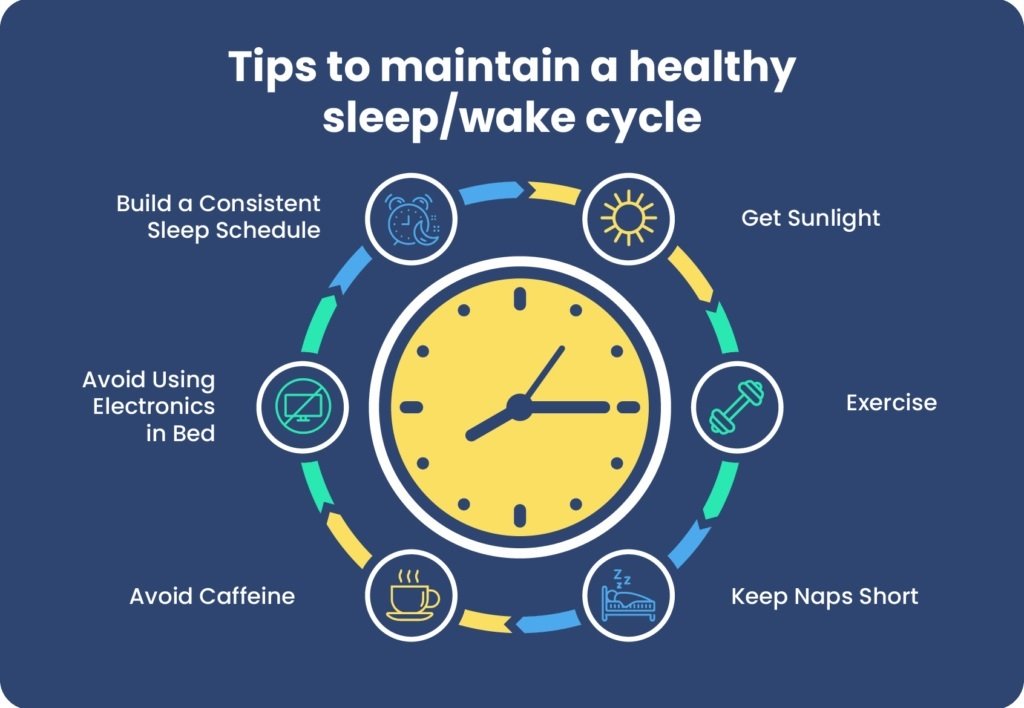
Common Causes of Sleep Disruption
Modern lifestyle factors significantly impact sleep quality, including chronic stress, excessive screen time, irregular schedules, and poor sleep environments. Technology use before bedtime disrupts natural melatonin production, while stress triggers cortisol release that interferes with the body’s ability to wind down.
How Natural Remedies Work
Natural medicine approaches work by supporting the body’s existing sleep mechanisms rather than forcing artificial states of unconsciousness. These methods help regulate neurotransmitters, reduce stress hormones, and create optimal conditions for natural sleep onset.
Individual Variations in Sleep Needs
Sleep requirements vary significantly among individuals, with most adults needing 7-9 hours per night. Factors like age, genetics, health status, and lifestyle influence personal sleep needs and response to different natural remedies.
Creating the Perfect Sleep Environment
Bedroom Optimization
Temperature Control
The ideal bedroom temperature ranges between 60-67°F, as cooler environments signal the body to prepare for sleep. This temperature range supports natural core body temperature drops that occur during sleep onset.
Light Management
Complete darkness promotes optimal melatonin production, making blackout curtains essential for quality rest. Even small amounts of light from electronics can disrupt circadian rhythms and interfere with deep sleep stages.
Sound Management
White noise machines or earplugs help mask disruptive sounds that can fragment sleep. Consistent, gentle background noise often improves sleep quality by preventing sudden awakening from environmental sounds.
Bedding Considerations
Quality mattresses and pillows appropriate for individual sleep positions significantly impact comfort and spinal alignment during rest. Investing in proper sleep surfaces often provides immediate improvements in sleep quality.
Digital Detox Strategies
Blue light from screens suppresses melatonin production for several hours after exposure, making evening device use particularly problematic for sleep. Creating phone-free zones in bedrooms helps establish clear boundaries between waking and sleeping spaces.
Alternative evening activities like reading, gentle stretching, or listening to calming music provide relaxation without the stimulating effects of screens.
Natural Sleep-Inducing Remedies
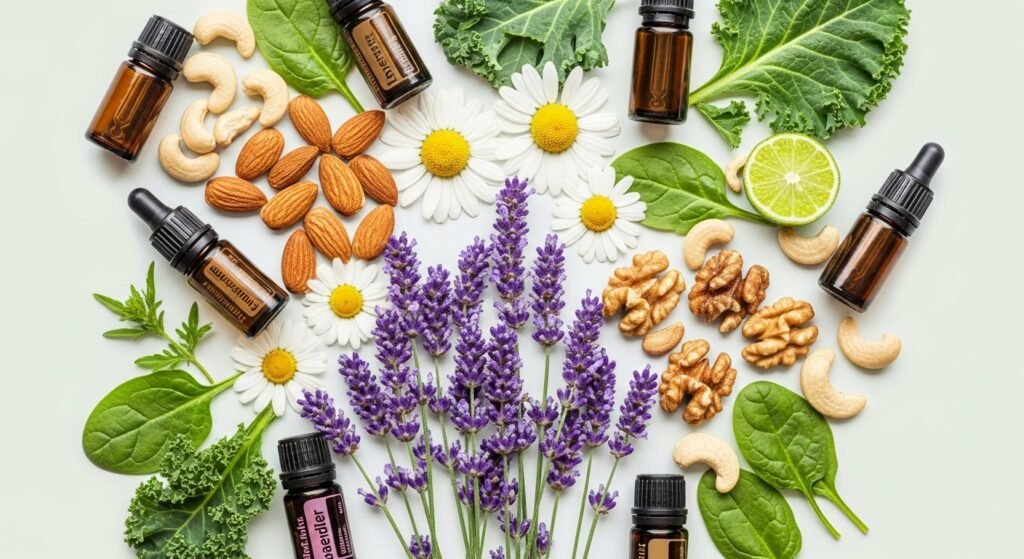
1. Herbal Teas and Infusions
Chamomile
Chamomile represents one of the most researched and effective natural sleep aids available. This gentle herb contains apigenin, a compound that binds to brain receptors to promote sleepiness. Brewing one cup of chamomile tea 30-60 minutes before bedtime provides optimal benefits.
Passionflower Tea
Passionflower demonstrates significant anxiety-reducing properties that indirectly support better sleep. This herb helps calm racing thoughts that often prevent sleep onset, making it particularly beneficial for stress-related insomnia.
Valerian Root
Valerian root has been used for centuries as a natural remedy for sleep difficulties. While the taste can be challenging, valerian’s effectiveness in reducing sleep latency makes it worth considering for those with persistent sleep onset problems.
Lavender-Infused Beverages
Lavender tea provides both aromatherapeutic and direct calming effects when consumed before bedtime. The dual sensory experience of taste and aroma enhances relaxation responses in the nervous system.
DIY Sleep Tea Blends
Combining multiple sleep-promoting herbs creates synergistic effects that may be more powerful than single-ingredient preparations. Popular combinations include chamomile with lavender, or passionflower with lemon balm.
2. Essential Oils and Aromatherapy
Lavender Oil Applications
Lavender essential oil stands out among natural remedies for its extensively documented sleep-promoting properties. Research shows that lavender inhalation increases slow-wave sleep and reduces time to sleep onset.
Application methods include diffusion, topical application to pulse points when diluted with carrier oils, or adding a few drops to pillowcases. The consistent use of lavender creates positive sleep associations through classical conditioning.
Bergamot’s Calming Properties
Bergamot essential oil offers unique benefits by reducing cortisol levels and promoting relaxation without sedation. This citrus oil works particularly well for individuals whose sleep problems stem from stress and anxiety.
Cedarwood and Sandalwood
These woody essential oils promote deeper sleep stages and may help with sleep maintenance issues. Their grounding aromas help quiet mental chatter that often prevents restful sleep.
Safe Diffusion Practices
Proper essential oil diffusion involves using appropriate dilutions, ensuring adequate ventilation, and limiting exposure time to prevent sensitization. Starting with shorter diffusion periods allows individuals to gauge their response to different oils.
3. Magnesium for Muscle Relaxation
Types of Magnesium Supplements
Different magnesium forms offer varying benefits for sleep support. Magnesium glycinate provides high bioavailability with minimal digestive upset, while magnesium citrate offers good absorption but may cause loose stools in sensitive individuals.
Magnesium-Rich Foods
Including magnesium-rich foods in evening meals supports natural muscle relaxation and nervous system calming. Dark leafy greens, nuts, seeds, and whole grains provide sustained magnesium release throughout the night.
Epsom Salt Baths
Warm baths with Epsom salts allow transdermal magnesium absorption while providing the additional benefit of heat therapy for muscle relaxation. Soaking for 15-20 minutes before bedtime creates a powerful sleep-promoting ritual.
Proper Dosing and Timing
Magnesium supplements work best when taken 1-2 hours before bedtime, allowing adequate time for absorption and effect onset. Starting with lower doses helps prevent digestive discomfort while allowing the body to adjust.
4. Melatonin-Supporting Foods
Natural Melatonin Sources
Tart cherries contain naturally occurring melatonin and have shown effectiveness in improving sleep quality in clinical studies. Consuming tart cherry juice or dried cherries 1-2 hours before bedtime provides natural melatonin supplementation.
Walnuts also contain melatonin precursors and healthy fats that support overall brain health and neurotransmitter production.
Foods That Promote Melatonin Production
Foods rich in tryptophan, magnesium, and complex carbohydrates support the body’s natural melatonin synthesis. Turkey, almonds, bananas, and oats provide building blocks for sleep-promoting neurotransmitters.
Timing Meals for Circadian Support
Eating patterns significantly influence circadian rhythms, with late evening meals disrupting natural sleep preparation. Finishing meals 2-3 hours before bedtime allows proper digestion while supporting natural sleep hormone production.
Behavioral and Lifestyle Hacks
5. Progressive Muscle Relaxation
Step-by-Step Technique Guide
Progressive muscle relaxation involves systematically tensing and releasing muscle groups throughout the body, starting with the toes and moving upward. This technique helps identify areas of physical tension while training the body to achieve deeper relaxation states.
Beginning practitioners should focus on major muscle groups first, gradually incorporating smaller muscle groups as the technique becomes more familiar. The process typically takes 10-20 minutes and can be practiced in bed.
Benefits for Stress Relief
This technique provides immediate stress relief while building long-term resilience to physical tension. Regular practice helps individuals recognize early signs of stress accumulation and address them before they interfere with sleep.
6. Breathing Techniques
4-7-8 Breathing Method
This powerful technique involves inhaling for 4 counts, holding for 7 counts, and exhaling for 8 counts. The extended exhale activates the parasympathetic nervous system, promoting rapid relaxation and sleep onset.
Practicing 4-7-8 breathing for just 4 cycles can significantly reduce sleep latency for many individuals. Consistency in practice enhances effectiveness over time.
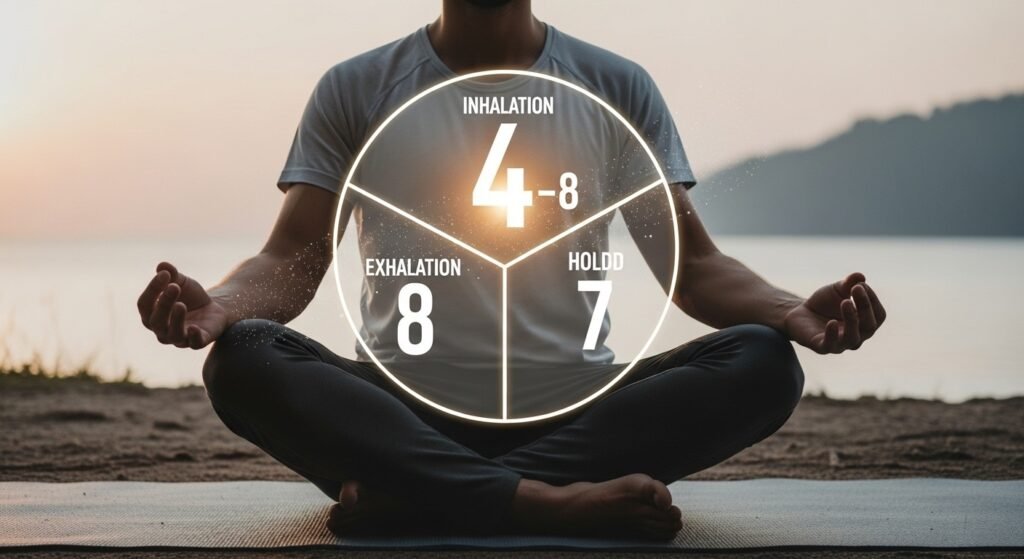
Box Breathing for Anxiety Reduction
Box breathing uses equal counts for inhaling, holding, exhaling, and holding again, creating a “square” pattern. This technique helps regulate the nervous system and provides a focal point for anxious minds.
Diaphragmatic Breathing Basics
Deep breathing from the diaphragm rather than shallow chest breathing maximizes oxygen exchange while activating relaxation responses. Placing one hand on the chest and another on the belly helps ensure proper technique.
7. Journaling and Mental Clearing
Brain Dump Technique
Writing down all thoughts, worries, and tomorrow’s tasks before bed helps clear mental clutter that often prevents sleep onset. This technique provides closure to the day while externally storing information that might otherwise cycle through the mind.
Gratitude Journaling
Focusing on positive experiences from the day shifts mental focus away from stress and worry. Gratitude practices have been shown to improve sleep quality and reduce time to sleep onset.
Worry Scheduling
Designating specific times for worry and problem-solving prevents these activities from intruding on sleep time. When concerns arise at bedtime, individuals can remind themselves to address these issues during their scheduled worry time.
8. Temperature Regulation Tricks
Cooling Socks Method
Wearing thin, breathable socks to bed helps regulate foot temperature and may improve overall sleep quality. Cold feet can prevent sleep onset by disrupting circulation and comfort.
Strategic Bathing and Showering
Taking a warm bath or shower 1-2 hours before bedtime creates a temperature drop when exiting the warm water, mimicking the natural core body temperature decline that signals sleep readiness.
Breathable Sleepwear
Natural fibers like cotton, bamboo, or linen allow better air circulation and moisture wicking compared to synthetic materials. Loose-fitting garments prevent restriction while maintaining comfort throughout the night.
Timing and Routine Strategies
9. The 90-Minute Rule
Understanding that sleep cycles last approximately 90 minutes allows for strategic timing of sleep and wake times. Waking at the end of a complete cycle rather than in the middle often results in feeling more refreshed and alert.
Backward planning from desired wake times helps determine optimal bedtimes. Sleep cycle tracking apps can provide insights into individual patterns and optimal timing.
10. Morning Light Exposure
Circadian Rhythm Regulation
Exposure to bright light within the first hour of waking helps regulate circadian rhythms and improve nighttime sleep quality. Natural sunlight provides the most effective circadian cues, though artificial light therapy can substitute when natural light is unavailable.
Optimal Timing and Duration
15-30 minutes of bright light exposure soon after waking provides sufficient circadian signaling for most individuals. Consistency in timing enhances effectiveness over time.

Light Therapy for Seasonal Issues
Light therapy boxes can help address seasonal sleep disruptions, particularly during winter months when natural light exposure is limited. These devices should provide appropriate light intensity and spectrum for therapeutic benefit.
11. Strategic Caffeine and Alcohol Management
Caffeine Timing Guidelines
Caffeine has a half-life of 6-8 hours, meaning afternoon consumption can significantly impact nighttime sleep quality. Limiting caffeine intake to morning hours helps prevent sleep interference while maintaining desired alertness benefits.
Alcohol’s Sleep Impact
While alcohol may initially cause drowsiness, it significantly disrupts sleep architecture, reducing REM sleep and causing frequent awakenings. Limiting alcohol consumption, especially within 3-4 hours of bedtime, improves overall sleep quality.
Healthy Evening Alternatives
Herbal teas, warm milk, or other natural sleep aids provide comforting evening rituals without the sleep-disrupting effects of caffeine or alcohol.
Quick Fixes for Common Sleep Problems
Racing Mind Solutions
Mental Math Tricks
Engaging in simple, repetitive mental tasks like counting backward from 100 by threes provides a focus point that interrupts anxious thought patterns. These tasks are engaging enough to distract the mind but boring enough to promote sleepiness.
Visualization Techniques
Creating detailed mental imagery of peaceful scenes helps shift focus away from worries while promoting relaxation. Progressive visualization techniques guide the mind through calming scenarios that support sleep onset.
Progressive Storytelling
Creating ongoing, non-stimulating mental stories provides entertainment without excitement. These stories should be familiar and comforting rather than suspenseful or engaging.
Physical Discomfort Relief
Gentle Bedtime Stretches
Light stretching before bed helps release physical tension accumulated during the day. Focus on major muscle groups used frequently, including shoulders, neck, hips, and legs.
Pillow Positioning
Proper pillow placement supports spinal alignment for all sleep positions. Side sleepers benefit from pillows between knees, while back sleepers may need support under knees to maintain natural lumbar curve.
Middle-of-Night Wake-ups
The 20-Minute Rule
If unable to return to sleep within 20 minutes of waking, leaving bed for a quiet, non-stimulating activity prevents bed association with wakefulness. Reading with dim light or gentle stretching can help re-establish sleepiness.

Avoiding Clock-Watching
Checking time during night wakings often increases anxiety about sleep loss. Covering clocks or turning them away from view helps prevent time-related sleep anxiety.
Building Your Personal Sleep Toolkit
Assessment and Customization
Identifying specific sleep challenges helps tailor natural remedies to individual needs. Some people struggle primarily with sleep onset, while others have sleep maintenance issues or early morning awakening problems.
30-Day Implementation Plan
Gradual implementation of sleep improvements prevents overwhelming changes while allowing time to assess effectiveness. Starting with environmental modifications before adding supplements or techniques often provides the best foundation for success.
Tracking Progress
Simple sleep logs tracking bedtime, wake time, sleep quality ratings, and remedy usage help identify patterns and effective combinations. Apps can streamline tracking while providing insights into sleep trends.
When to Seek Professional Help
Red Flags for Sleep Disorders
Persistent sleep problems lasting more than 4 weeks despite consistent natural remedies may indicate underlying sleep disorders requiring professional evaluation. Loud snoring, breathing interruptions, or excessive daytime sleepiness warrant medical assessment.
Sleep Apnea Warning Signs
Witnessed breathing pauses during sleep, morning headaches, and extreme daytime fatigue may indicate sleep apnea, a serious condition requiring medical treatment rather than home remedies.
Finding Qualified Specialists
Board-certified sleep medicine physicians provide comprehensive evaluations and treatment options for complex sleep disorders. Holistic medicine near me searches can help locate integrative practitioners who combine conventional and natural approaches.
Troubleshooting Common Obstacles
Shift Work Challenges
Irregular schedules require modified approaches to natural sleep aids, including strategic light exposure, meal timing, and supplement scheduling. Maintaining consistent sleep duration becomes more important than consistent timing for shift workers.
Partner Sleep Disruption
Different sleep needs and schedules within relationships require compromise and communication. Natural remedies often work well for couples since they typically don’t involve disruptive equipment or medications.
Travel Considerations
Maintaining sleep routines while traveling involves portable natural sleep aids like essential oils, herbal teas, and relaxation techniques. Adjusting to new time zones can be supported through strategic light exposure and meal timing.
Conclusion
Natural remedies for better sleep offer safe, effective alternatives to pharmaceutical sleep aids while supporting long-term sleep health. The most successful approaches combine multiple strategies tailored to individual needs and preferences.
Consistency and patience remain crucial factors in natural sleep improvement, with most individuals seeing meaningful results within 2-4 weeks of dedicated practice. These home remedies work best when integrated into comprehensive healthy lifestyle practices.
Creating sustainable long-term sleep habits requires viewing sleep as a priority worthy of time and attention. The investment in natural sleep aids and healthy sleep practices pays dividends in improved daytime energy, mood, and overall health.
Starting with simple environmental modifications and gradually adding techniques and natural remedies provides a manageable path toward better sleep without overwhelming changes.
Quick Reference Guide
Emergency Sleep Kit
- Chamomile tea bags
- Lavender essential oil
- Magnesium supplement
- Sleep journal and pen
- Eye mask and earplugs
- Comfortable sleepwear
Simple Preparation Guides
- Chamomile Tea: Steep 1 tea bag or 1 tsp dried flowers in hot water for 5-10 minutes
- Lavender Pillow Spray: Mix 10 drops lavender oil with 2 oz water in spray bottle
- Relaxing Bath: Add 1-2 cups Epsom salts to warm bathwater, soak 15-20 minutes
- Sleep Tea Blend: Combine equal parts chamomile, passionflower, and lemon balm
Recommended Resources
Quality sources for natural sleep aids include reputable health food stores, certified organic suppliers, and established herbal medicine companies. Research-backed information about sleep and natural medicine can be found through sleep medicine organizations and integrative health resources.
Building an effective sleep toolkit with natural remedies provides sustainable solutions for better rest while supporting overall health and well-being.




Pingback: Natural Detox Hacks for a Healthier Lifestyle